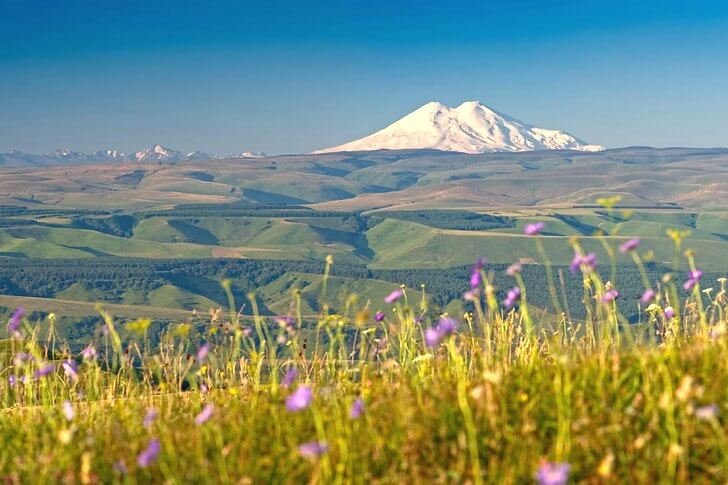Kislovodsk is a real southern resort city with a huge park area, elegant streets, flowering alleys full of all possible shades, and a special atmosphere inherent only in this area. There is everything for a quality holiday: clean air, mild climate, a large number of attractions and picturesque landscapes. But there is no sea, but this does not seem to prevent tourists from enjoying their vacation.
In recent years, the city authorities have done a lot to renovate Kislovodsk. Abandoned buildings were restored, park spaces improved and tourism infrastructure improved. Today it has turned into a full-fledged modern resort, actively attracting guests.
What to see and where to go in Kislovodsk?
The most interesting and beautiful places for walking. Photos and a short description.
- Resort park
- Kurortny boulevard
- Narzan Gallery
- Main narzan baths
- Colonnade
- Lermontov site
- Cascading staircase
- Floral calendar
- Mirror Pond and Glass Jet
- Museum-estate of the artist N. A. Yaroshenko
- Museum Dacha Chaliapin
- Museum of History and Local Lore Fortress
- State Philharmonic
- Theater-Museum Blagodat
- Monument to Lermontov
- Crocodile statue
- Kislovodsk Dolphinarium
- St. Nicholas Cathedral
- Air Temple
- Cable car
- Rock Castle of Treachery and Love
- Red stones
- Honey waterfalls
- Ring-mountain
- Mountains Small and Big Saddle
resort park
Kislovodsk Resort Park is the second largest in Europe. It occupies an area of almost 1000 hectares, while being located within the city limits. The recreational zone was founded in 1823, when Kislovodsk began to develop as a medical resort. At the heart of the green spaces is the picturesque Rose Valley, where flowers of all kinds, shapes and colors grow. The best time to admire the colorful carpet is the second half of summer, as most varieties of roses bloom at this time.
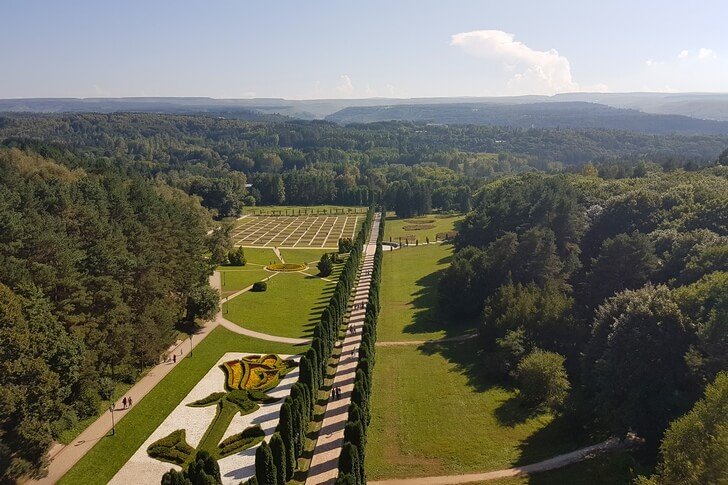
Kurortny boulevard
Walking street in Kislovodsk, starting at the Narzan Gallery and passing through the most picturesque areas of the city. Along it, mansions of the 19th and early 20th centuries stand in orderly rows, bright flower beds are laid out in the middle, the hot summer air is refreshed by jets of small fountains, around which cozy benches are placed - in a word, a real southern promenade, always full of leisurely strolling people.

Narzan Gallery
An architectural monument and a healing spring where you can try healing narzan. The gallery is located at the entrance to the Kurortny Park. The building resembles the outlines of a Gothic castle. It was erected according to the sketches of the architect S. I. Upton. Around the complex there is a small square with walking alleys and flower beds, the interior space is decorated with statues and marble trim, the roof is crowned with a glass dome.
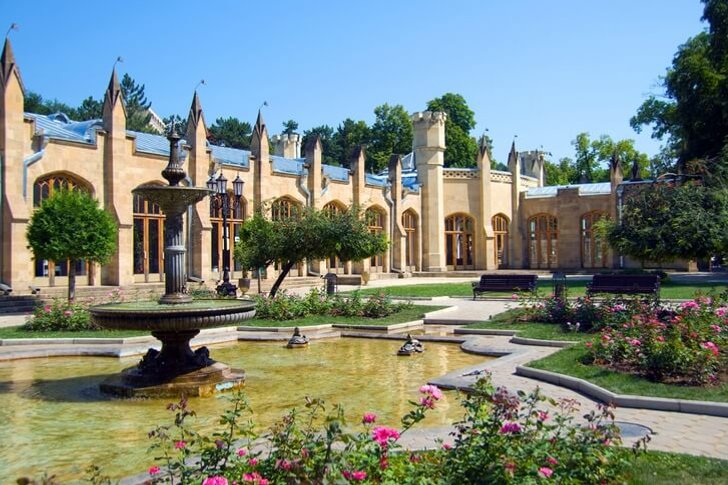
Main narzan baths
The baths are located in a building of the beginning of the 20th century, which was built according to the project of A. N. Klepinin in the Moorish style. It is considered one of the most beautiful buildings in Kislovodsk. Looking at the richly decorated decorative towers, the floral ornament repeated in many elements, the balconies typical of the palaces of the caliphs, it is hard to believe that this miracle is not located somewhere in Andalusia, but in the expanses of our homeland.

Colonnade
Neoclassical colonnade, consisting of two tiers, which is located in the Kurortny Park. It was erected in 1913. The structure is a series of columns standing in a semicircle, in the upper part there is a balustrade (in the warm season there is a summer terrace). The second floor is an arched enfilade framed by two turrets. The attraction is the hallmark of Kislovodsk.
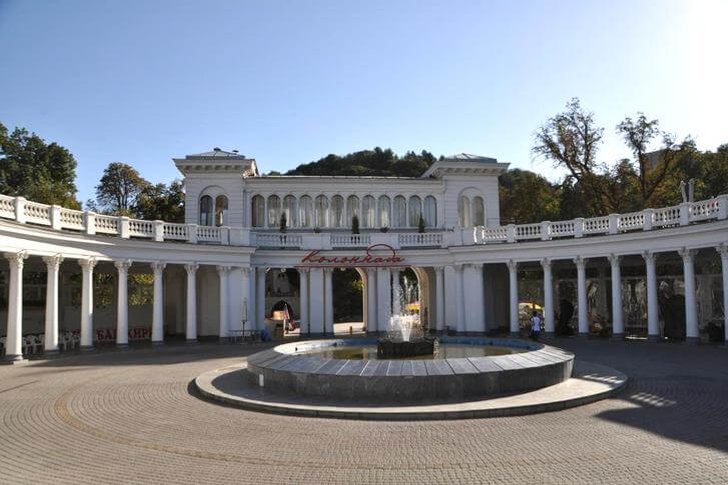
Lermontov site
The site is located near the entrance to the park opposite the Colonnade. It is a small space on a hill, where a beautifully designed sandstone staircase leads. A bust of M. Yu. Lermontov is placed in the niche of the wall, a grotto with a sculpture of the Demon, a famous character in Mikhail Yuryevich's poem, is located a little lower. The site appeared in 1948 on the site of a pre-revolutionary restaurant.
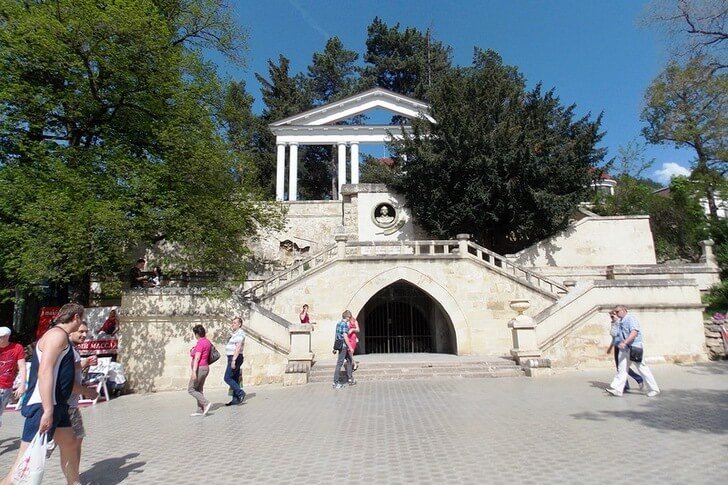
Cascading staircase
The construction of the 1930s, built from local stone according to the project of K. A. Shevchenko and L. S. Zalesskaya. The staircase leads to the rotunda, located on a small observation deck. On the sides are decorative pools. In the evening, colorful lights turn on here, which makes the place even more romantic. In 2015, a complete reconstruction of the attraction was carried out.

Floral calendar
The calendar adorns the spa park, being its highlight. It first appeared in 1924 thanks to the work of gardeners-decorators. It is a patterned flower bed, on which, with the help of flowers and other plants (boxwood, arborvitae, juniper), a dial, a year, a month, and even a day are laid out. Plantings form a continuous living carpet, delighting observers with its beauty at any time of the year.

Mirror Pond and Glass Jet
Elements of the ensemble of the Kurortny Park, lost among its many attractions. A pond is an artificial reservoir built on the site of a natural spring with the purest mountain water. On its shore there is a small gazebo with colored stained-glass windows, under which there is a glass jet - a stream flowing into a crack, resembling a flat glass surface.

Museum-estate of the artist N. A. Yaroshenko
An old manor, where at the beginning of the 19th century the painter N. A. Yaroshenko lived - a representative of the movement of Russian Wanderers. I.E. visited the walls of his house. Repin and A.I. Kuindzhi. Back in 1918, it was decided to organize a museum in the mansion, but in the end it was given over to communal housing. The opening of the exposition dragged on until 1962. Today, the collection of the museum-estate contains works by N. A. Yaroshenko himself and other Russian masters.

Museum "Dacha Chaliapin"
The famous singer F. I. Chaliapin visited Kislovodsk more than once. The house of the beginning of the 20th century, where he preferred to stay, was nicknamed "Chaliapin's dacha". Today, a literary and musical museum operates on its territory, as well as concerts (including the annual Chaliapin Seasons), meetings, and creative evenings. The building itself is a mansion of unusual architecture with a wooden roof and a veranda, replete with whimsical decor.
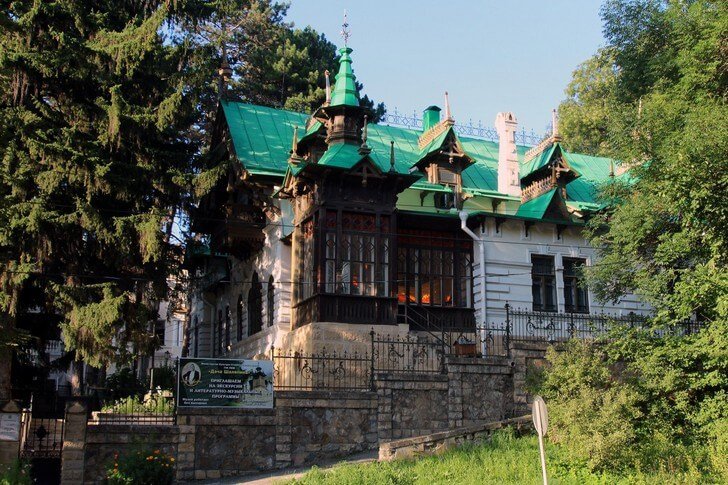
Museum of History and Local Lore "Fortress"
The Kislovodsk fortress is the only defensive structure of the Russian Empire that has survived in the North Caucasus. It was built in the first half of the 19th century during the period of intensive conquest of these lands. A gate, a section of the wall, a corner tower and barracks have survived to this day. In Soviet times, a sanatorium was located on its territory. Since 1965, the local history museum has been operating at the fortress.
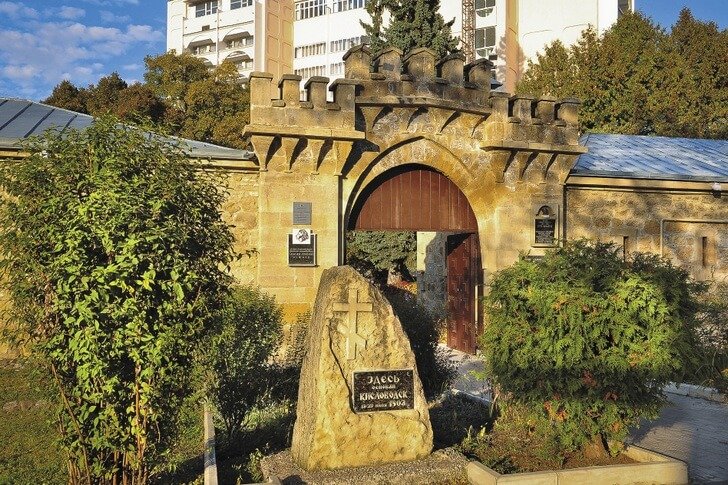
State Philharmonic
The main building of the Philharmonic, which rightfully deserved the title of an architectural monument, was built in 1895 and was called the Spa Hall at that time. In the same year, the city symphony orchestra was formed, which began to give concerts on an ongoing basis. In 1972, another concert hall was erected as an extension to the main one for chamber performances. Today, the foyer of the Philharmonic hosts a permanent exhibition of local artists.

Theater-Museum "Blagodat"
The theater stage received its first visitors in 1992, it was located on the territory of the historic mansion. The peculiarity of "Blagodat" is that the institution maintains the traditions of home performances that took place in the estates of aristocrats in the 19th century. The creative intelligentsia, who were resting in Kislovodsk, then took part in the productions. In addition to performances, in the theater you can see a museum exposition dedicated to famous people whose fates were connected with the city.
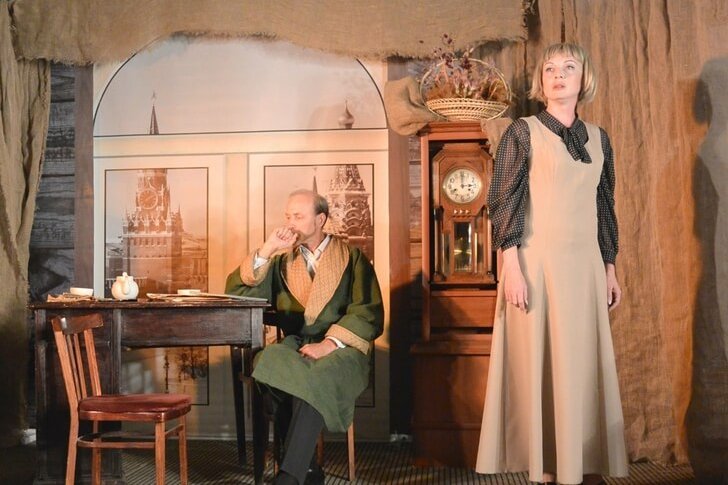
Monument to Lermontov
The sculpture was originally installed in 2001 on Mount Red Sun. The poet is depicted sitting on a stone in a tense pose, as if spellbound by the surrounding panorama and the distant peaks of the Caucasus Range. The height of the monument is 2.3 meters, it weighs about 700 kg. Today, the statue is located on the territory of the Kurortny Park, but due to the fact that the figure of the writer is “taken out of context”, the author’s original idea no longer finds its embodiment.
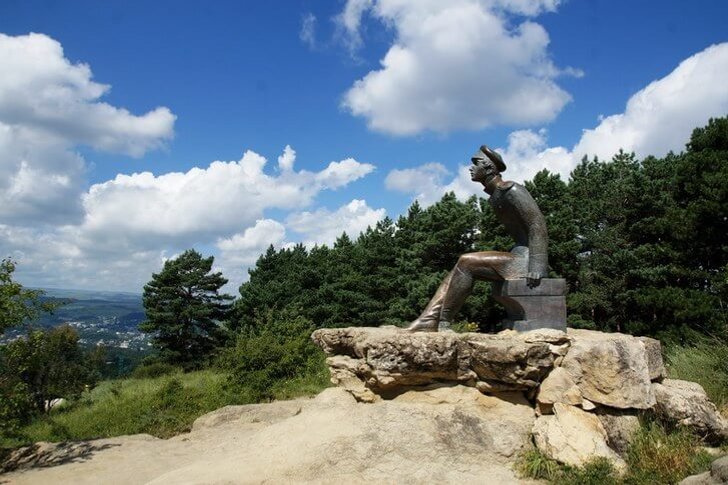
crocodile statue
The statue is located in the Rose Valley of the Spa Park. It was created by Kislovodsk gardeners in the middle of the 20th century immediately after the war. It is a stone sculpture of a formidable reptile 4 meters long. The crocodile is depicted with an open mouth and sharp teeth, ready to tear someone to pieces right now. The animal resembles a prehistoric view of the dinosaur era both in size and intimidating appearance.
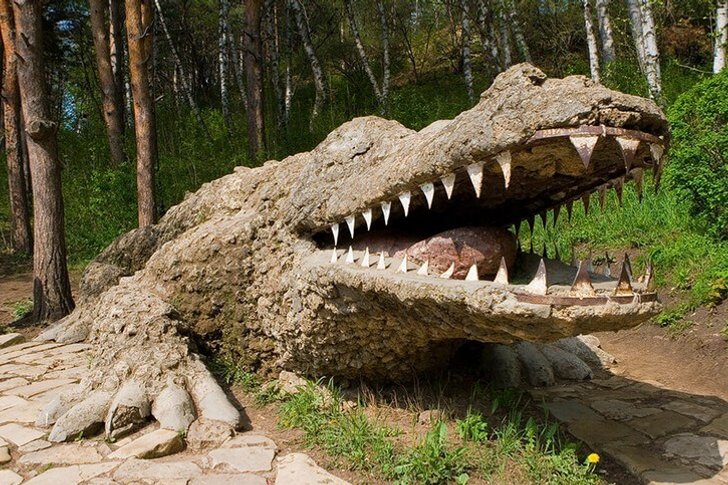
Kislovodsk Dolphinarium
The Dolphinarium started operating in 2008. Today it is one of the most popular family holiday destinations. Its inhabitants are Black Sea bottlenose dolphins, whales, walruses and sea lions. All year round, several times a week, shows are held here under the guidance of experienced trainers. Also, visitors are offered to purchase paintings painted by dolphins as an original souvenir.

St. Nicholas Cathedral
Cathedral Church of Kislovodsk, built in honor of Nicholas the Wonderworker. The first wooden church dedicated to this saint appeared in the city in 1803. The stone cathedral was built in 1888, 12 years later a bell tower was built nearby. The historical building was destroyed during the Soviet era. The modern temple appeared in 1999, its architectural appearance was brought as close as possible to the original.

Air Temple
Even before the Revolution in 1914, a pavilion in the form of a classical semi-rotunda was erected on the territory of the Upper Park, from where a panoramic view of the surroundings and the peaks of the Caucasus Mountains seen in the distance was opened. The building was called the "Temple of the Air". In Soviet times, there were cafes, a lounge and a reading room. At the end of the 20th century, the building fell into disrepair and collapsed; it was closed for safety reasons. In 2015, after the reconstruction, the Temple reopened its doors.
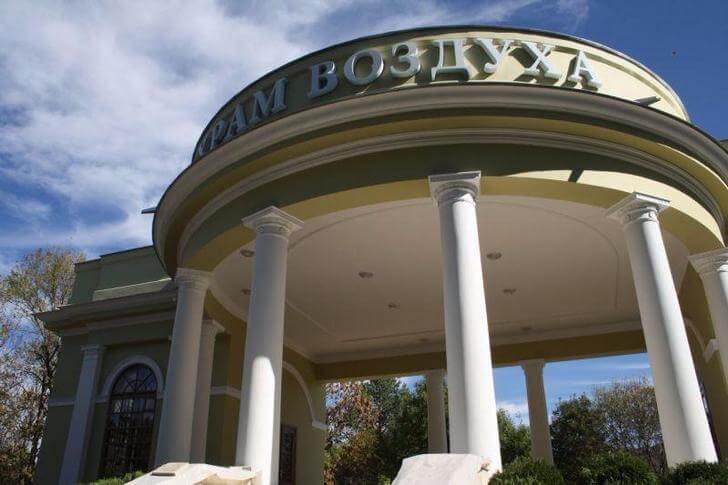
cable car
The cable car connects the Lower and Upper parks (parts of the Kurortny Park). During a trip in a trailer, you can enjoy a picturesque view of green spaces and a well-groomed area that stretches around a huge recreational area, as well as the beautiful Valley of Roses and the recreated "Temple of the Air". With further ascent, views of mountain peaks open up, including Elbrus.
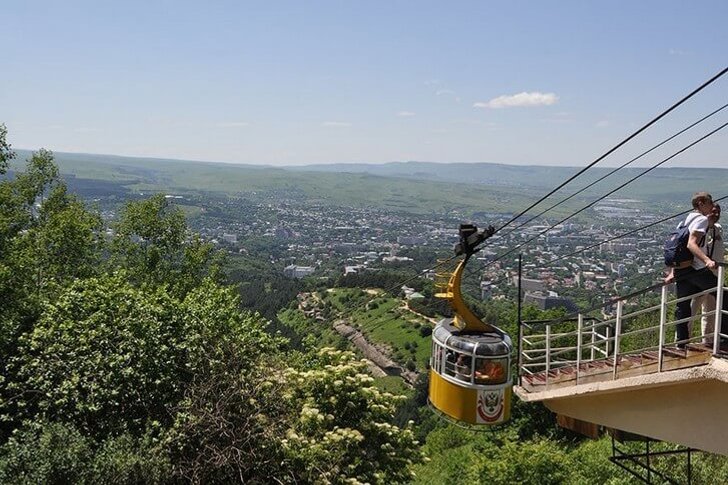
Rock "Castle of Treachery and Love"
A natural monument, which is a steep cape of the Rocky Range. The height of the cliff is about 1 km above sea level. The place is a popular tourist attraction; there is a hotel and a restaurant of the same name, stylized as an old castle. The complex was built in 1939 and was in great demand during the Soviet era. Foreign delegations were even brought here.
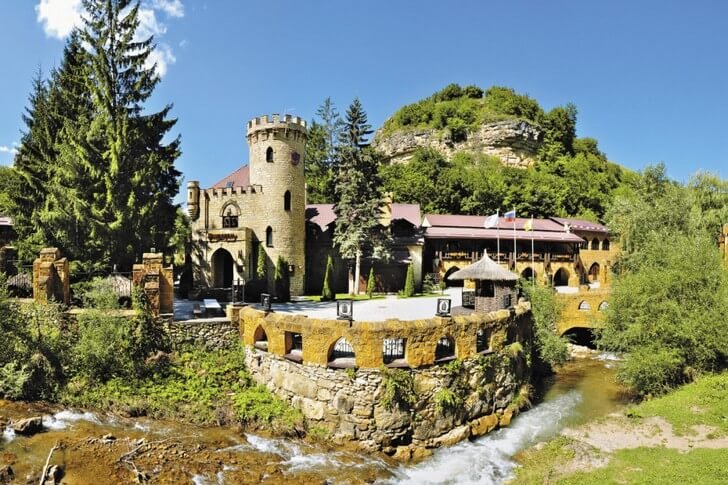
red stones
The famous eagle - a symbol of the Caucasian mineral waters, was installed in the 1950s on the Red Stones (low rocks with rich rust-colored slopes), which are located within the Middle Park. Unfortunately, the original has not survived; it was replaced with a new statue in the 2000s. In the powerful paws of a noble bird, the body of a poisonous snake is clamped. According to legend, the insidious reptile stung the eagle, but before he died, he managed to strangle her.
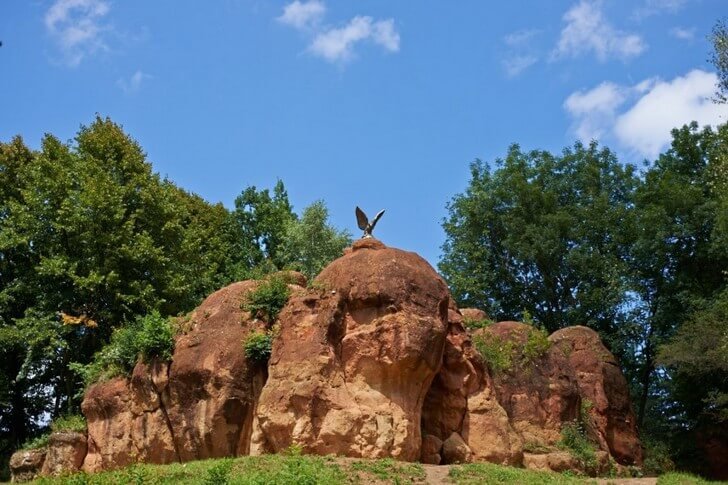
honey waterfalls
Three mountain streams falling from a height of 18 meters into the gorge of the Alikonovka River. At the base, the waterfalls raise clouds of water dust - thousands of drops fly in different directions, creating incredible humidity in the air. Tourists have laid many paths around the attraction, along which you can get very close to the stream. The name "Honey" comes from the past - wild bees used to live in this area.

Ring-mountain
Flat rock on the outskirts of Kislovodsk with a hole in the form of a ring. It is part of the Borgustan Range. Height above sea level is about 900 meters. The cape, on which the ring mountain is located, is made of sandstone and dotted with caves. Since ancient times, magical properties have been attributed to an unusual formation. For example, a warrior who rode a horse through a hole became invincible.
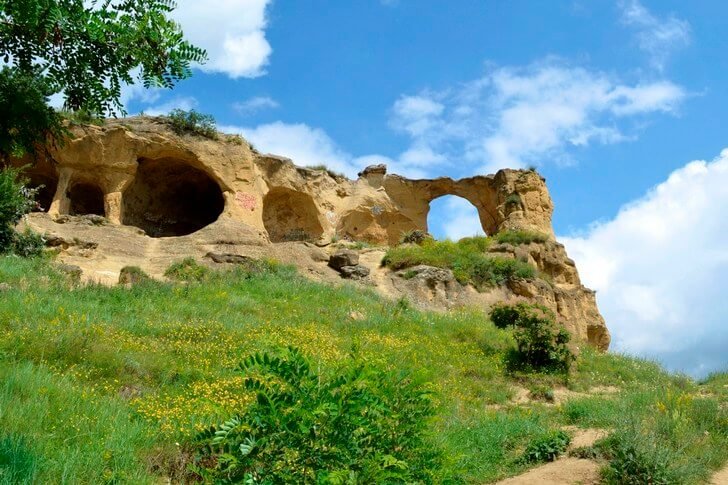
Mountains Small and Big Saddle
The Small and Big Saddle are the uplands of the Dzhinal Range. Locals affectionately call them "Kislovodsk Hills", although they reach considerable sizes - more than 1300 meters and 1400 meters in height above sea level. Even the 1915 guidebook explains how to get to these peaks, which speaks of the long-standing popularity of the natural attraction. From the Big Saddle, the Caucasus Range and its main peak, Elbrus, are perfectly visible.
